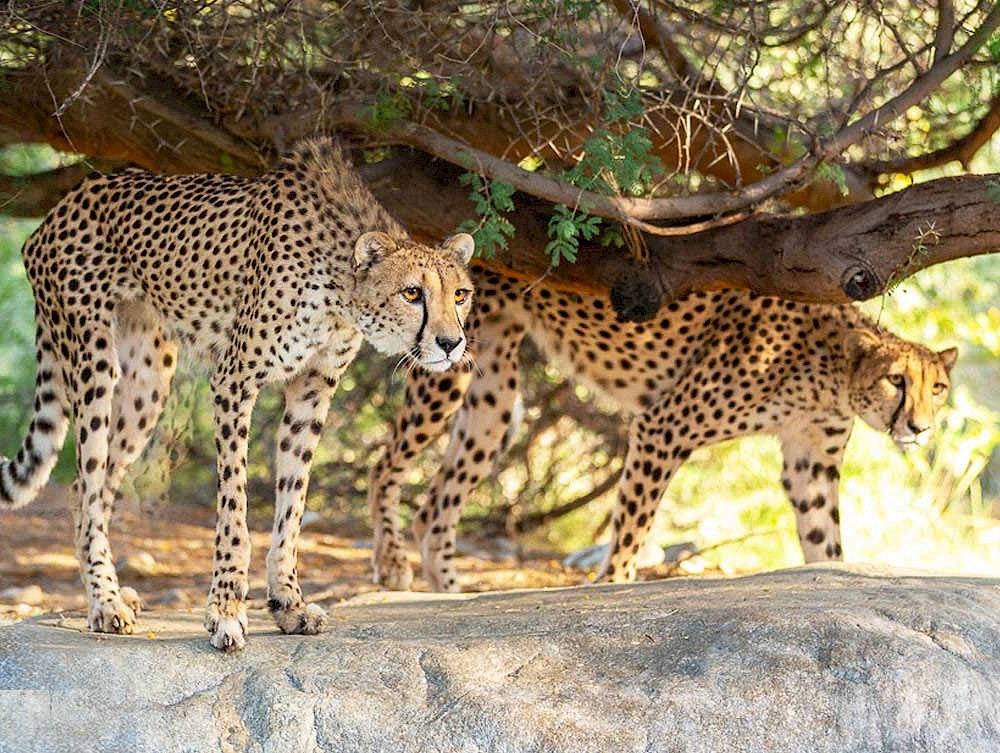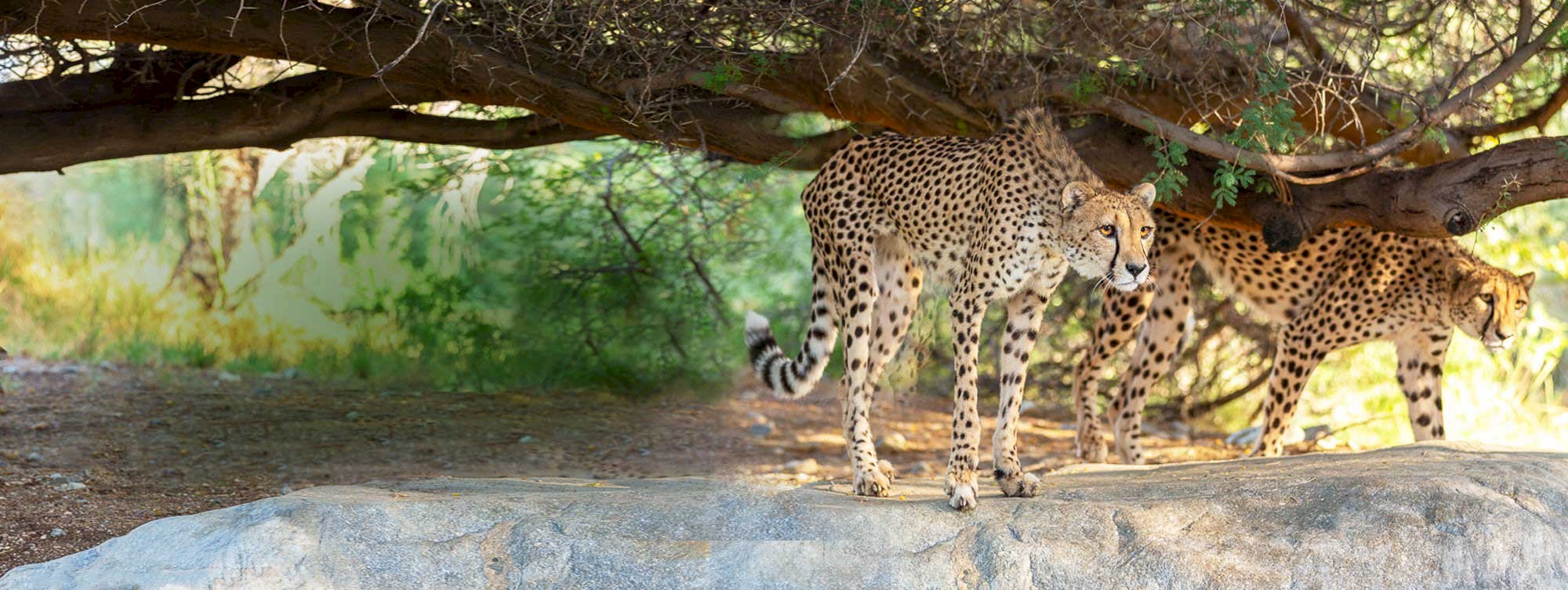Help Ensure That The Desert is Truly a Living Desert
February 24, 2023
By Dr. James Danoff-Burg, Director of Conservation
Living in the living desert that surrounds The Living Desert Zoo and Gardens is a great pleasure! I love the many hundreds of native species of the greater Californian desert that surround us here – the odd cacti, twisting ocotillo, sword-bearing yuccas and agaves, beautiful flowering shrubs, and the many other colorful desert plants that provide the breathtaking canvas on which we all paint our lives. The oddity of our local flora is what piques my interest every day, as there are always things that I notice that stop me in my tracks. Invariably, some small flower feature, hairs on a leaf, the pollinators that are visiting the plant, or the seemingly impossible rocks out of which they grow will cause my head to swivel. It’s all amazing.
However, despite the beauty and novelty of these native plants, they are facing challenges from invasive species. Weeds like Sahara mustard and fountain grass, as well as ecologically damaging trees like tamarisk, are competing with and overpowering the native plants. This can alter water flows, dry up streams and ponds, displace native plants, homogenize the landscape, and increase the risk of wildfires. Invasive species not only harm the plants but also the animal wildlife that depends on them for food, shelter, and moisture, such as the desert tortoise, desert pupfish, and native pollinators like butterflies, beetles, and birds.
The good news is that we all can help stop this process! We can plant only native plants to prevent non-native plant seeds from being produced in our yards or gardens. By doing so we will provide additional habitats and food for native pollinators. We can take out our grass lawns and plant them as native plant pollinator gardens. Lawns are ecological dead zones that are of no use to local pollinators and require lots of money, water, pesticides, herbicides, and time to mow and maintain. As such, lawns are not only costly but are toxic to our beloved native pollinators that many of us love to watch as they flit about our yards. By replacing grass with much more alluring native flowering plants, we become agents of conservation by beautifying our desert landscape.
The conservation team at The Living Desert is at the forefront of protecting native plants across the Coachella Valley. To protect the imperiled native desert pupfish, and many other local desert animals, our conservation team has controlled tamarisk trees through 1.3 km of Salt Creek, an area that has dried up in the past in the summers due to these water-hungry trees. (Learn more about this project here.) We are also working to restore native plant diversity that will benefit desert tortoises in almost 6 km2 in the Orocopia Mountains (learn more here) and we are working with schools and communities in the Eastern Coachella Valley to create 20 pollinator gardens in their schools. An essential part of this outreach is also creating engaging educational activities that can be used to build a love for native plants and pollinators among our future conservation citizens and leaders.
Everyone can contribute to the conservation of native plants by planting natives, removing lawns, and conserving water. Support your neighbors, schools, and municipalities as more and more of them nativescape their lands. In so doing, we can all help make our desert home even more of a living desert!









